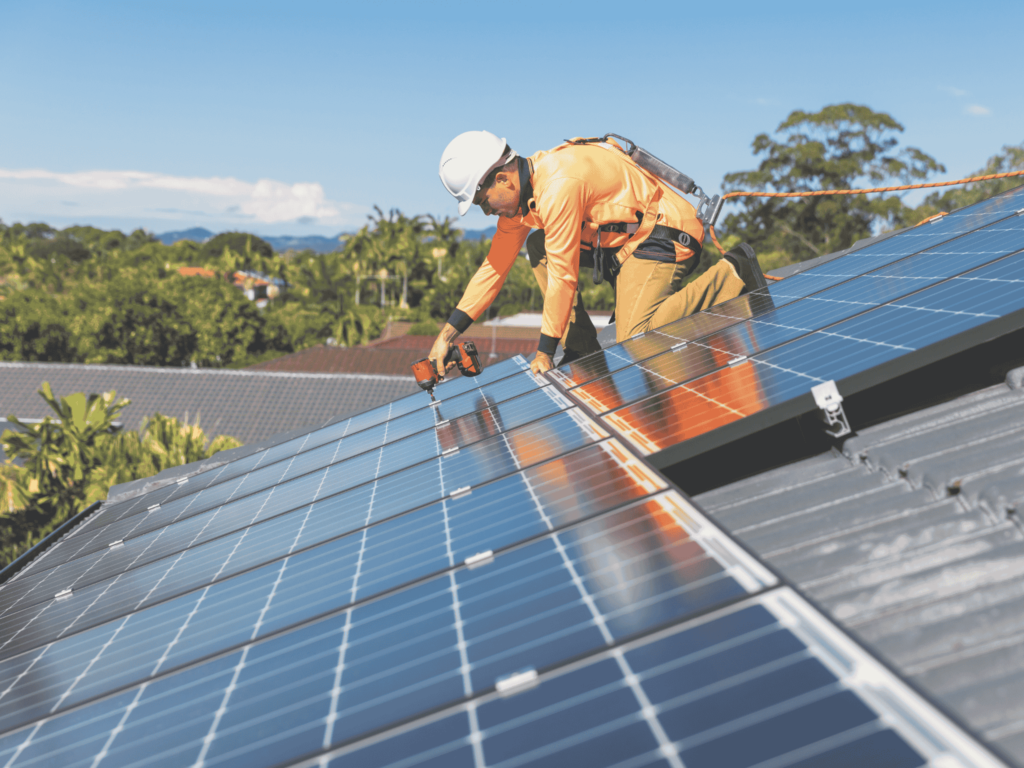Spring in Colorado brings not just warmer days but also the perfect opportunity to keep solar panels performing at their best. The best practices for cleaning solar panels during Colorado’s spring include shutting down the system, cleaning panels early or late in the day to avoid temperature shock, and using only mild soap and water to gently remove debris. Safety should always come first, such as avoiding getting up on the roof if it’s not necessary.
Following a consistent schedule for panel inspections and cleaning is very important for long-term efficiency. This routine becomes especially important as spring brings pollen, dust, and bird droppings that can reduce energy output. Regular upkeep during this season helps homeowners catch early signs of wear or damage that might otherwise go unnoticed. For those unsure about what to look for, a reliable guide to solar panel repair by Solarise can help with practical steps and safety tips. By taking these small actions now, you will be able to prevent larger problems as the summer months approach.
Key Takeaways
- Shut down panels and use gentle cleaning methods.
- Inspect and clean panels in spring for peak performance.
- Follow a maintenance routine for long-lasting solar efficiency.
Spring Cleaning Best Practices for Solar Panels in Colorado
Effective solar panel cleaning in Colorado helps maintain energy efficiency and extends the lifespan of the installation. The spring season brings unique challenges such as pollen, dust, and unpredictable weather, which makes careful planning and proper methods very important.
Assessing Panel Condition Before Cleaning
Inspection is the first step. Homeowners should visually assess their solar panels at least twice a year, which includes checking for dirt buildup, bird droppings, and any signs of physical damage.
It is safest to inspect from the ground using binoculars rather than climbing onto the roof. If panels show cracks, loose wires, or other issues, it is best to contact a professional before cleaning. Cleaning should only begin if the panels are intact and the weather is mild to avoid risks of slipping or damaging the system.
Preparing the Right Cleaning Materials
Choose non-abrasive materials to avoid scratching the glass. Use a soft brush or sponge, a bucket of lukewarm water mixed with mild soap, and a squeegee with an extension handle for better reach.
Never use harsh chemicals, abrasive scrubbers, or pressure washers as they can damage the glass and compromise efficiency. Early morning or late evening is the ideal time for cleaning, as the panels are cooler and less likely to show water spots.
Step-by-Step Cleaning Process
First, always turn off the solar installation before starting any cleaning, following the manufacturer’s shutdown instructions. Rinse panels gently with a hose to remove loose debris. Avoid high pressure to prevent forcing dirt under the glass or damaging seals.
Apply soapy water with a soft sponge or brush, gently wiping away grime or deposits. Rinse again with clean water and use a squeegee to remove excess water, reducing the chance for streaks.
Throughout the process, avoid standing on the panels or applying heavy weight. For particularly stubborn dirt or for rooftops with steep angles, consider professional cleaning as suggested in the guidelines for solar panel maintenance in Colorado.
Maintaining Optimal Performance and Safety After Cleaning
Regular cleaning isn’t the final step for solar panel care in Colorado’s spring. Homeowners should ensure their panels operate safely and efficiently by checking installation integrity, tracking performance, and taking advantage of advanced technology.
Inspecting for Installation Issues
After cleaning, an inspection of the panel installation is very important. Examine mounting brackets, wiring, and connectors for any visible wear, corrosion, or loosened parts that may have shifted during cleaning.
Loose cabling can compromise safety and power output. Signs of water infiltration, such as condensation inside the panel or damaged seals, need prompt attention to prevent reduced efficiency and electrical hazards.
If there’s any uncertainty, a professional assessment is recommended. Many experts advise that panels receive an annual maintenance check to catch early signs of damage or faults and keep systems operating reliably throughout the year.
Monitoring Panel Efficiency
Homeowners can monitor performance through inverter displays or solar monitoring apps. Compare current power output to past performance data, especially after a thorough spring cleaning.
Lower-than-expected output may indicate underlying issues, such as panel soiling that was not fully removed, shading from new growth, or electrical faults. Consistent monitoring helps pinpoint efficiency drops promptly.
Clean panels typically result in a noticeable boost in output when no obstructions or malfunctions exist. Scheduling regular checks—especially in Colorado’s variable spring weather—ensures that small problems don’t develop into costly repairs.
Using Smart Inverters and Energy Storage Solutions
Smart inverters and modern energy storage systems can further stabilise and enhance solar power usage. These devices automatically maximise panel efficiency and provide detailed analytics on system performance, making it easier to spot inefficiencies or faults.
A quality battery storage setup ensures excess springtime generation isn’t wasted. Smart inverters adjust output in real-time to balance household energy needs and changing daylight hours.
Features common in advanced inverters include remote monitoring, diagnostic alerts, and communication with home energy management platforms. Leveraging these tools supports safety and efficiency in solar-powered homes year-round.
Conclusion
Regular maintenance in spring increases solar panel efficiency and safety. Early morning or late evening are the best times for cleaning to avoid rapid drying, while using mild soap and water prevents surface damage.
Homeowners are encouraged to conduct visual inspections at least twice a year, ideally during the spring and fall seasons. Proper cleaning, careful handling, and routine checks of both panels and inverters ensure optimal long-term performance.
For those who prefer not to climb the roof, using a hose from the ground or hiring a professional reduces risk and supports effective results.
